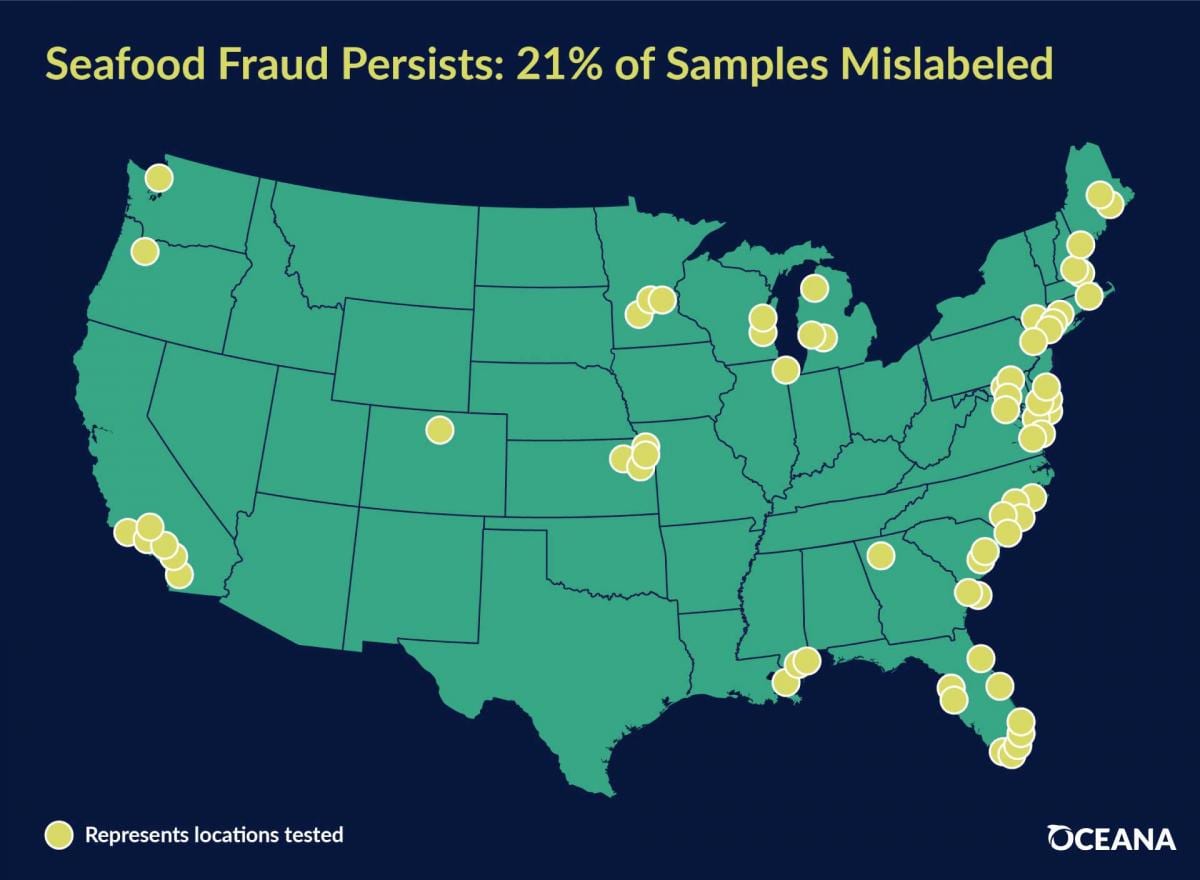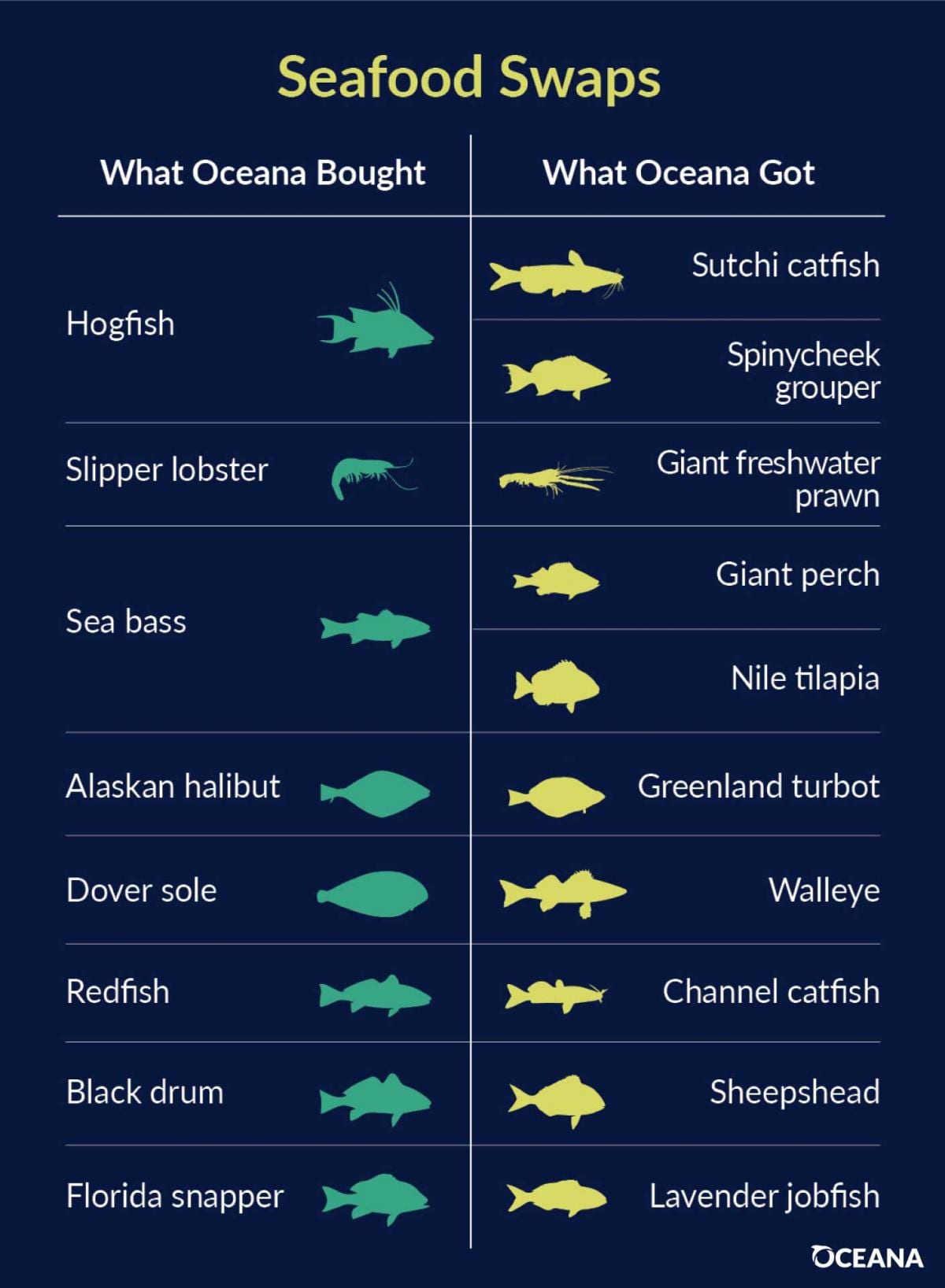March 5, 2019
Oceana Study Finds Seafood Fraud Nationwide
What’s really on your plate? Oceana launched a campaign to stop seafood fraud in 2011. Since then, we’ve been sampling seafood from coast to coast. Roughly one-third of more than 1,500 samples we tested were mislabeled. Oceana brought these findings to the public and urged the government to act, and in 2018, the federal government implemented the Seafood Import Monitoring Program, requiring catch documentation and traceability for some imported fish at risk of seafood fraud and illegal fishing. The program was a great first step, but only applies to 13 types of imported seafood and traces them from the boat or farm to the U.S. border.

In our most recent study, Oceana tested popular seafood not included in the federal traceability program. Between March and August 2018, Oceana collected more than 400 samples from 24 different states and the District of Columbia.
The results revealed that species substitution is still a problem: 1 in every 5 fish tested was mislabeled. One-third of the establishments visited sold mislabeled seafood. Imported seafood was sold as regional favorites, fooling customers into thinking their seafood is locally sourced. Vulnerable species, such as Atlantic halibut, were sold as more sustainable catch. Some were sold with generic names like “sea bass” and “catfish,” disguising lower-value species or masking health and conservation risks.

The lack of transparency and traceability in the seafood supply chain threatens our oceans, cheats consumers, and hurts honest fishermen and business owners. In order to stop seafood fraud, key information must follow the fish from the boat or farm to the dinner place. Traceability is the only way to ensure that all seafood sold in the United States is safe, legally caught and honestly labeled.
Read the full report here.
MOST RECENT
September 3, 2025
Air Raid Panic to Informed Skies and Seas: The National Weather Service in a Nutshell
August 29, 2025
August 22, 2025
Corals, Community, and Celebration: Oceana Goes to Salmonfest!



